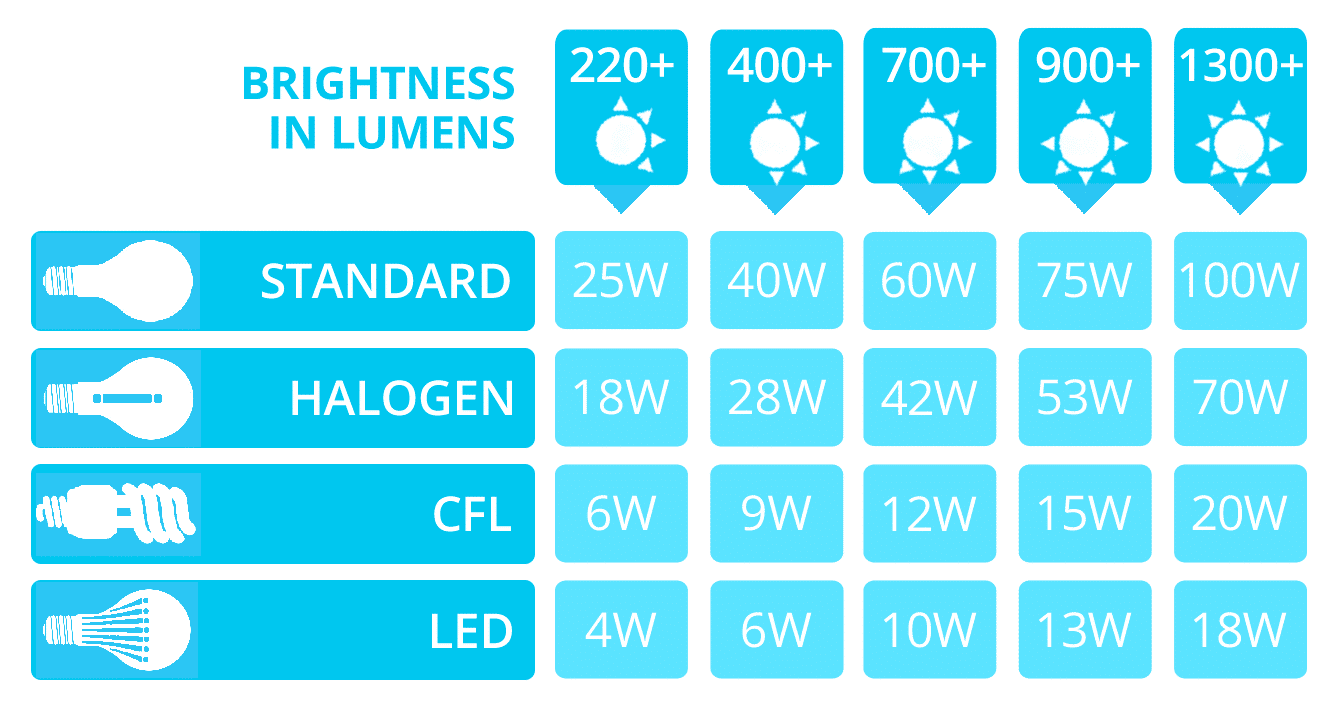
Over the years, many people argue that LED lights don’t do well in the cold. If you bought LED lights in your garage several years back and had problems, then this is not the case anymore. Most companies manufacturing LED lights have advanced to making them favorable for all conditions, cold and heat.
Do LED lights work in a cold garage? Yes. LED lights work extremely well in a cold garage. They are made to adapt to all kinds of conditions and have proven very sustainable garage lights during cold winter periods.
Apart from being one of the best lights for any garage, LED lights are long-lasting and efficient for garages. They save on electricity and thus you won’t be paying the hefty bills and more benefits.
Why LED Lights are Perfect for the Garage
LED lights are perfect for the garage because they are energy-efficient, durable, and lasts longer than traditional bulbs. They also provide a brighter light than incandescent bulbs.
If you want to add some extra lighting to your garage, consider using LED lights instead of traditional bulbs. These lights are much better for the environment and they last longer than traditional bulbs too.
LED vs Fluorescent
Not so long ago, garage and warehouse lighting was provided by fluorescent tubes. These were inexpensive and gave off enough light. But eventually, technology improved. We wanted lights that are more efficient, sustainable, longer-lasting, and brighter.
Then along came LED bulbs. These bulbs were smaller, brighter, and cheaper than fluorescent bulbs. They also lasted longer. LED bulbs take that to a new level without sacrificing the functionalities of fluorescent lights.Also Check: 6 Best Hardwired LED Garage Lights: Reviews & Buyer Guide
Why do you need LED Lights for your Garage?
LED lights are the insurgence of garage lights. Unlike conventional lights that work by producing heat in order to see the visible lights, which consume a lot of electricity and energy, LED lights are the opposite.
LED lights turn the electricity into lights and they don’t stand a chance of getting hot. They save up to 60% of the energy consumed, making them the most preferred garage lights. Most LED lights for garages especially the hardwired ones don’t require any setup.
When it comes to the brightness of light, nothing measures the light produced by LED lights. They can light up large garage space and you can work easily all the time. If you are in a place and not be able to access electricity, there are LED lights that are special-made to work with solar panels and you can even power them using matching batteries.
One thing most people hate about conventional light bulbs is their shelf life. You want something convenient that will be used for years. These light bulbs fade over time and constant replacement is needed. With LED garage lights, you can expect to do a replacement in about 17 years or even longer if you are not using them for longer periods. And you rest assured that the level of brightness will not change.
Apart from longevity, LED shop lights also save on energy and bills. You will be able to divert the hefty amounts that would have been paid to electricity to other meaningful things. And also they are environmentally friendly.
Also Check:6 Best Lights for Garage: Reviews & Buyer Guide
Main Features of LED garage lights
If you need to purchase LED for your garage, then you should know the following:
Very efficient: Unlike traditional incandescent bulbs, you will use LED lights in your garage for many ages to come. One LED bulb only uses 2 to 5 watts, therefore, saving on energy costs.
Very bright: Since LED garage lights are measures in lumens, you are guaranteed the level of lights will be brightest.
Expensive: Conventional lights cost somewhere from $20 to $50 on average. But due to its many benefits, expect to chuck out $100 to $200 when purchasing LED lights for your garage.
Compact and flexible design: This is another feature common with LED shop lights. You can deform them to the shape that you need.
Perfect: LED lights are not only efficient, but they also do not build up any heat whatsoever. They can be also used in any weather conditions.
Environmental friendly: Since they are free of mercury, LED garage lights are highly recommended.
No dimming: This is one of the best features about LED garage lights, is that they maintain the dimness over the years with no chance of failing at some point.
Will LED Lights Flicker in Cold Weather?
LED lights are becoming increasingly popular due to their energy efficiency and long life span. They also offer a number of benefits over traditional lighting options such as incandescent bulbs. However, there are some downsides to using LED lights.
One of these downsides is that LED lights flicker in cold weather. If you live in an area where temperatures drop below freezing, you might notice that your LED light bulbs flicker. This is common in cheaper components. For example, manufacturers of LED bulbs use cheap materials that are not weather-proof.
LED light bulbs buying guide
For 134 years, the incandescent light bulbs reigned supreme. But that is all starting to change thanks to recent legislation that mandates stricter efficiency standards for lighting.
And that means that new bulbs like LED and CFL are starting to become the new normal. This means that replacing your lights is going to be a whole lot different from here on out. But don’t worry because we got you covered with the handy buying guide.
New regulations and standards.
So with these new standards and these new bulbs, you’re going to need to know a little bit more about lighting when you make your next light bulb purchase. There is going to be a much longer-lasting appliance for you. It’s going to be more of an investment even if they cost more, so you want to know what you’re getting before you get it.
What is a lumen?

The first most important thing you need to learn is what a lumen is. A lumen is a unit of brightness. A lumen just tells you how bright a light is the more lumens a light has the brighter it’s going to be.
So when you’re looking at two bulbs and you want to compare exactly how bright they’re going to be, just look at the lumens. Don’t worry about the wattage. Don’t worry about anything else. The lumens are going to tell you how bright it is. It is a concrete number. The more lumens, the brighter it is.
And this is an easy thing to do these days because the Federal Trade Commission made sure that lighting manufacturers put lighting facts on the box and they’ve got these little labels that are just like nutrition facts on food. Understanding lumens will help you figure the brightness out and shop around and get a better bulb.
What is color temperature?
The other principle that you’re really going to want to know and understand is color temperature. The way this works is you’ve got a scale of temperature from 2,700 degrees Kelvin or so to 6,000 degrees Kelvin.

And the confusing part is that lights on the lower end of the spectrum are considered warm lights. And as they get hotter in terms of color temperature they’re called cool lights. So it is confusing. It’s not ideal.
But just understand that warm lights are yellow on the low end of the spectrum and cool lights are blue on the high end of the spectrum. Incandescent has always lived on the yellow end of the spectrum and CFL is an LED that has been thought to sit on the blue end but that’s not true anymore. There are plenty of bulbs across the spectrum when it comes to CFL as an LED. So you’re going to have plenty of options.
So if someone tells you that the new energy standards mean the end of yellowy incandescent style light, that’s just simply not true. To help you find these options to make it really easy, the manufacturers even color code their packaging in many cases.
Smart lighting options.
And finally, you’re going to want to be aware of the fact that there are a lot of emerging smart light options in the market. You can find bulbs you screw in and use Bluetooth or Wi-Fi to control from your phone.
Bulbs, you can connect with an existing home automation system like Nexia and sync up with your smart locks and with your thermostat and with all sorts of devices and they’re really cool to play with. They add a lot of functionality and make your life a little easier.
There are also lights like the Philips Hue that change color on demand and create a party you can sync it up to your music and have all sorts of fun recipes going on. It’s just a lot of fun.
What is the Operating Temperature of LED Lights?
LED lights are becoming increasingly popular because of their energy efficiency and long life span. They are also known for their ability to produce bright light at low temperatures. However, there are some people who are concerned about the operating temperature of these lights.
What is the operating temperature of an LED light bulb?
There are two types of LED bulbs: cool white and warm white. Cool white bulbs operate at around 2700K while warm white bulbs operate at around 3000K. The operating temperature of an LED bulb is determined by the color of the light emitted by the bulb.
LED LIGHTS COMPARISON TABLE
| LED | FLORESCENT | HALOGEN | INCANDESCENT | |
|---|---|---|---|---|
| EFFICIENCY | Uses up to 80% less energy than an incandescent | Uses up to 75% less energy than an incandescent | Uses up to 30% less energy than an incandescent | 90% of energy is wasted as heat |
| AVERAGE LIFE SPAN (HOURS) | 50,000 | 10,000 | 1,000 | 1,000 |
| ANNUAL OPERATING COSTS | LOW | MEDIUM-LOW | MEDIUM | HIGH |
| LIGHT OUTPUT (WATTS/800 LUMENS | 6-8W | 3-15W | 45W | 60W |
| COLOR TEMPERATURE | Varies by product; select high-quality LEDs for consistency | Ranges from warm (3,000K) to cool (6,000K) | Ranges from warm (2,700K) to cool (5,500K) | Warm (2,700K) |
| COLOR RENDERING INDEX (CRI) | 80-90+ | Most are 60-70+ | 100 | 100 |
| DIRECTIONALITY | Directional | Multidirectional | Multidirectional | Multidirectional |
| DIMMABLE | MOST | FEW | YES | YES |
Conclusion:
LED lights can be a little expensive and kind of a novelty, but as novelties but they are totally worth any penny spent on them. Be it in a garage or even your house, you will never go wrong with LED lights. They are the best lights for a cold and dark garage at all times.
Contents
